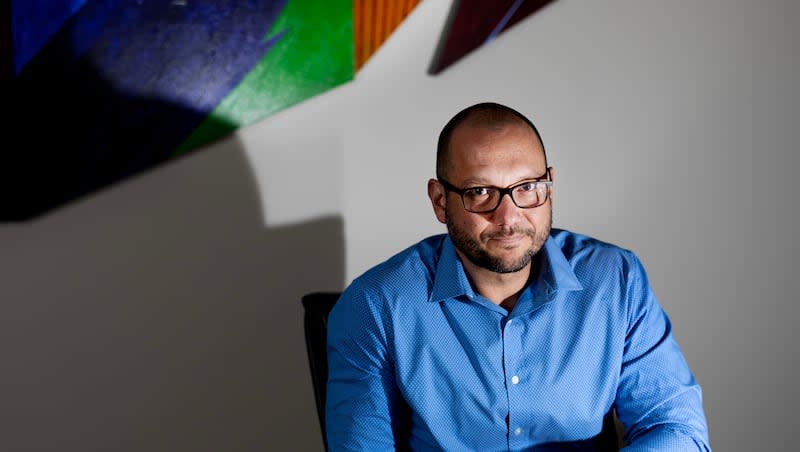Do Utah youth get a good defense in court?

When an adult has to go to court even for just a traffic ticket, it’s daunting, said Brett Peterson, director of the Utah Division of Juvenile Justice and Youth Services. But when it’s a kid going to court, it can be even harder for them. Kids process consequences differently and navigating the court system even with parental help is challenging.
Having a good public defender can make a big difference for kids in the system and making sure these defenders are compensated well may be key.
That was one of the central recommendations of the Gault Center, which gave the Deseret News the first look at its assessment of Utah’s juvenile defense system. The report is a year in the making and came from conducting 66 interviews with prosecutors, judges and public defenders, observing 124 court proceedings in the state and in-person tours of state facilities.
Report authors started off their assessment by praising Utah for making strides in improving its youth juvenile defense system and noted several areas of progress, including recent legislative reforms to increase children’s access to counsel and the work of Utah’s Indigent Defense Commission.
Matthew Barraza, executive director of the Utah Indigent Defense Commission, and Peterson were briefed on the report and spoke about it to the Deseret News.
Recommendations to improve the system
Contracts were a focal point of the report because of the way changes to them could positively impact other areas.
The assessment looked at Utah’s county-based contract system, where defenders are given a flat-flee contract. So, as a hypothetical example, a defender could be offered $5,500 to take on a case rather than an hourly rate. Report authors recommended that instead of offering a flat rate, the rate switch to hourly.
“Flat-fee contracts provide a financial disincentive for attorneys to spend the requisite time and resources on a case,” wrote the authors. In addition to incentivizing defense attorneys to spend more time with their clients, report authors also recommended that youth clients receive earlier access to counsel.
Those flat-fee contracts are yearly, said Barraza. “I have no doubt that the people who are doing this kind of work are dedicated and care about their clients that they’re serving, but this is a structural issue that needs to be addressed.”
A key theme of the report was that when youth have ample access to their counsel from the very beginning of the process (police interrogation) and have counsel who will spend the necessary time to fight for them in court, they have better outcomes.
Automatic appointment in the state has made it so youth are represented at their first hearings in court rather than later on in the process. The report praised this development and also said, “Utah should legislatively mandate that youth be advised by defense counsel before being allowed to waive their rights prior to police interrogation.”
The report also put forward the idea that Utah should make it so youth have counsel prior to formal court proceedings during earlier points of contact.
Police interrogation can be an intimidating experience, especially for youth who might be more susceptible to certain techniques, wrote the authors. “Interrogation should be recognized as a critical stage of the proceedings at which young people should be represented by publicly funded defense counsel.”

The report further recommended that instead of using a county-based model, the state switch to a regional model where multiple counties are sometimes grouped together. The report said this could help rural counties have better access to the necessary resources, support and oversight.
“Utah has a lot of rural counties that might not have the same level of access that someone living in Salt Lake County would,” said Peterson. But he also sees a strength in these communities: They pull together and work together quickly. “They know, hey, we don’t have 20 different options. We only have these two or three other partners at the table and so we can’t stay in silos.”
A regional system could allow defense lawyers to share an office provided by the district or region rather than pay out of pocket for office space. One managing defender told the assessment team, “There’s a lack of administrative help, things like buying office, computers, IT. We just got Westlaw. If the state has a resource, we should have it. Financially, it’s hard for our attorneys. And there are no benefits.”
Barraza said in Salt Lake County there’s an office that focuses exclusively on juvenile defense, but some counties rely on part-time contracts.
“Then they’ll supplement that with adult cases or noncriminal cases — what they need to do to make ends meet,” said Barraza. Due to the rural nature of some of the counties, even if a lawyer wanted to only do juvenile defense, it might be difficult for them to pick up enough cases — they may also have to travel a lot.
“Through a regionalized model, Utah should provide enhanced administrative support to managing defenders and contract attorneys, including shared office space, IT services, legal research tools and administrative support staff,” wrote the authors. “The state should invest in social workers within its youth defense system to support and enhance defenders’ detention and disposition advocacy and to improve dispositional options and outcomes.”
Barraza said there’s movement toward regionalization going on right now. “That’s something my agency has really been trying to move forward on — to get the counties who are neighbors to work together on public defense.”
Switching to a regional model could also support another recommendation the report made — allowing for specialization. “The state should support the establishment of youth defense clinics in Utah law schools to create a pipeline of new attorneys dedicated to youth defense as a year.”
An official with the Indigent Defense Commission told report authors, “I would love to have a corps of attorneys who just do youth defense. But where a single contract isn’t enough for full-time work, attorneys should have youth defense contracts across multiple counties, rather than across different types of practice.”
Peterson said juvenile defense does require some specialization and he praised the Indigent Defense Commission for providing some trainings on it, especially to rural Utah.
In addition to these recommendations, report authors recommended that Utah regularly analyze every level of the system to reduce racial disparities. The authors said that these analyses shouldn’t just happen in one or two areas of the system — the state should look at things like school suspensions as well as sentencing and how interventions play out in order to ensure fairness.
The report identified racial and ethnic disparities at arrest, court referral, locked detention, community placement and secure commitment. Citing data from 2021, the report stated, “Utah’s overall commitment and detention rates were below national rates, but its disproportionate incarceration of Black, Latino/a and Native/Indigenous youth was nearly double the national rate.”
Peterson said racial disparities in the juvenile defense system are an issue nationally as well as in Utah. The deeper you go into the system, the more pronounced the problem.
“It’s really important for us to stay open and making sure we’re continuing to look at our data and ask questions,” said Peterson.
One area where Peterson said the state has made progress on in this area is using standardized risk assessment tools, so when a young person comes before a judge, there’s at least a standard set of questions. “But then you still have to ask questions about that, too,” he said.
Report authors said that while Utah has reduced the financial burden on families already, there’s some more work that could be done, including eliminating fees.
Economic hardship for families who have a child involved in the juvenile defense system doesn’t just amount to fees. Parents sometimes have to take off work to attend court hearings or transport their child to treatment.
“Utah has made progress limiting the financial burden of court involvement and should continue to address the impacts of juvenile legal system fees and costs imposed on young people and families,” said the report authors. “The state should abolish all fines, fees, and costs associated with a juvenile court involvement and should prioritize eliminating costs-of-care charged to families while their children are incarcerated.”
Where the system is currently succeeding
Throughout the report, the authors also praised Utah for improving its juvenile defense system through previously implemented legislative reforms.
The report identified strong points of Utah’s system as it currently stands, such as getting counsel for youth for initial court appearances, using nonjudicial adjustments and reducing how many youth are held in detention before cases are adjudicated.
The progress Utah has made on detention rate is huge, said Barraza. It helps kids who have a lower risk of offending to not adopt habits that might contribute to a higher rate of offense.
“Through these reforms, the state has taken important steps to prevent Utah children from being ensnared by or pushed deeper into the juvenile legal system, both of which have negative consequences on a youth’s future success,” said the report authors.
The state also received kudos for youth defense standards, the creation of an appellate division and offering training to youth defenders.

